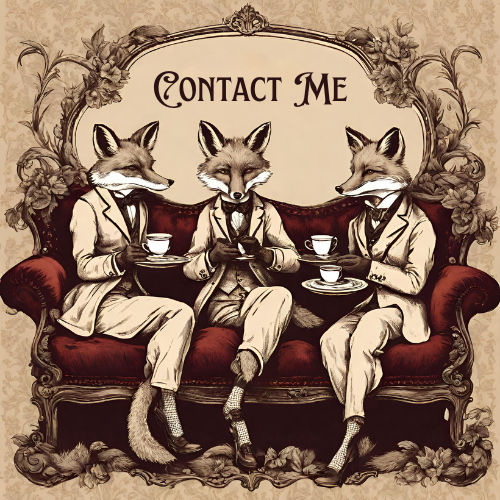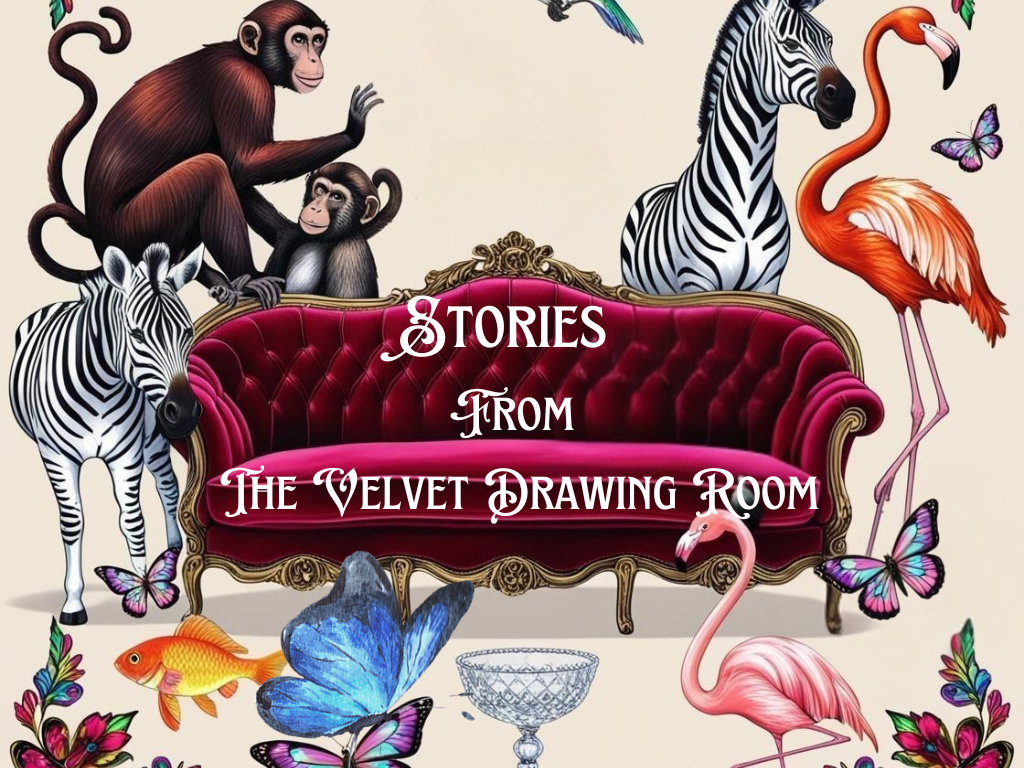Walter Burton FZS, Naturalist, Taxidermist & Entomologist
Walter Burton 1854-1913
Walter Burton FZS was the youngest son of Victorian Naturalist & Taxidermist, Henry J Burton.
Born on 12th September 1854 in Hampstead, he trained under his father in his business in London, first at Castle Street East, Marylebone, and then at Wardour Street.
The Burton business started from the 1850s as Henry J Burton, but became “Henry J Burton & Son” from about 1882.
Walter took over the running of his father’s business sometime before 1891 and it’s possible that it was six or seven years earlier than this.

Walter looks to have been what you might call “dashing” and here we see two photos of him – provided by one of Walter’s great granddaughters.
One is a typical “studio” photo of the 1880s, that were characterised by props and backdrops. They were carefully contrived by the photographer. Walter’s photo looks very “in vogue” for the time period, and is totally in keeping with the more naturalistic outdoor settings that were being used where the backdrops were painted to emulate rural or wooded locations, with the subject posed against rustic fences, gates and pergolas with artificial grass and foliage.

Photo of Walter Burton circa 1880 courtesy of Helen Wright
Burton’s Hummingbird
Burton’s Hummingbird is named after Walter Burton FZS
There are historical references to “Burton’s Hummingbird” which the high profile Adolphe Boucard the French naturalist, named after Walter Burton F.Z.S. This Hummingbird was named “Eustephanus Burtoni” and looked quite like the “Eustephanus Galeritus”
Adolphe Boucard’s Periodical – The Hummingbird
Adolphe Boucard published a Victorian periodical entitled The Hummingbird (1891–95) in which Walter Burton and his hummingbird are named. Going by the amount of contributions that Walter makes to the content of The Hummingbird, it seems that the two knew each other well, and I note that the distance between Boucard’s premises at High Holborn and Walter’s shop at 191 Wardour Street was no more than a 15 minute walk.

BFI footage of the Euston Road
My attention was drawn to an old film provided by the British Film Institute showing the Euston Road at the point of St Pancras train station and hotel in 1899. This road is a main artery and runs very nearby the proposed route of the walk between the premises of Boucard and Burton at that same time. The images in the film of horses and the general traffic can take us right back to the world of Walter.
Walter Burton writes in The Hummingbird
In the same edition of The Hummingbird magazine (with 204 pages) that named Burton’s Hummingbird (dated January 1891) we see an article written by Walter entitled “An Easy Way of Making One Hundred Pounds Sterling a Year. Birds and Mammals”.
In writing articles for Boucard, Walter Burton shows a wide knowledge and experience of exploration, hunting and preservation, and it’s also a pointer to his standing in the community of leading naturalists in London and beyond.

Walter Burton Explorer
We learn more about his general travel and expedition experience, because even before he reached the age of 35yrs he had already travelled to Australia – both to the North West and to the South East near Sydney and Melbourne.
This fact is recorded in The IBIS – Letters, Extracts and Notices 1887
We regret to record the death of a promising young naturalist, Mr. Thomas Henry Bowyer Bower, who was already known for his explorations in the interior of Queensland, where he procured many interesting species, among the principal being Cracticus rufescens and Scenopeus dentirostris. Last year he proceeded to Western Australia, accompanied by Mr. Walter Burton, and made large collections on the Fitzroy River, the bulk of which, however, were lost by a disastrous fire in the camp; and he unfortunately contracted a sharp attack of fever, which developed into typhoid at Port Darwin, where he died last January in his twenty fifth year. His father Captain Bowyer Bower has presented nearly the whole of his son’s collection to the British Museum.
Dr. E. P. Ramsay, Australian Museum, Sydney, wrote a series of articles on the Collection in the “Proceedings of the Linnean Society (N.S.W.)” Vols. I. and II.

Cover of the IBIS Periodical 1887
Walter Burton’s label

1865
The International Exhibition of 1865 in Dublin, showing casing artistic works, agricultural and industrial works from around the world
Henry J Burton
1883
The International Fisheries Exhibition London
The firm exhibited a group of saw-fish snouts, a large stuffed specimen of a sturgeon and a crocodile head.
Also turtle shells.
Plus, cases of ducks, cases of Waders, two common terns in a glass shade, Sea Fowl, Water Fowl, a case of Gannets, cases of Cormorants and a glass showcase of aquatic bird skins.
Medal/Award:
(Type: Gold, Silver, Bronze or Diploma)
Sturgeon Diploma
Unspecified “General Exhibit” Bronze medal
“Percidae” (small fish) Bronze medal
Henry J Burton & Son
Walter Burton Fellow of the Zoological Society of London
In 1889 by the time he was 35yrs Walter was already established as a Naturalist, Entomologist and as a Fellow of the Zoological Society of London.
Amongst his contemporaries that included London naturalists and taxidermists, the FZS membership was not common. Rowland Ward and Edward Gerrard Senior, and Edward Gerrard Junior counted amongst the fellows at this time.
The fees to join were significant and there was a voting and nomination system for getting in, so this is an indication of his capability and reputation.
Walter Burton’s World
The discovery of the natural world was at its peak in Victorian Britain from the 1850’s to 1900.
In the last quarter of the 19th century, Walter Burton was connected to the movers and shakers of this world of naturalists, hunters, scientists and their expeditions.

In this newspaper clipping from the Beverley Herald dated 5th January 1889 which describes an intended nine month-long expedition to South Africa, we see that Walter has withdrawn from it. Looking at the dates, it’s probably because he was planning to marry Emma Makins later that year in December 1889 and it’s likely he may not have been able to return to England in time for the wedding.
Look further at the detail in the clipping about those who were going on the expedition though, because it aptly conjures up a rich picture of Walter’s world.
Brandesburton Hall
The clipping mentions Brandesburton Hall and its owner, James Harrison, who was from the military, and who was also an explorer, and big game hunter. Harrison’s adventures in Central Africa led to him becoming the first white man to discover several Pygmy tribes. He brought six Pygmies from the Ituri Forest of the Belgian Congo to live at Brandesburton Hall in 1905! The Pygmies spent 30 months in England, appearing in shows at the London Hippodrome, Olympia, and also they were paraded in the House of Commons.

We cannot imagine this being remotely acceptable today, but this was the way of the Victorians. The Pygmies also lived in the Brandesburton Hall’s grounds, hunted in its parkland, and made arrowheads. Harrison built a glasshouse to replicate their equatorial conditions.
The Hall continued a collection of rare animals and tribal equipment, including a white rhinoceros horn, Abyssinian zebras, a hippopotamus, a Congo buffalo, and a Nubian ibex.
Broome Hall
The clipping also mentions Frederick Pennington from Broome Hall, who had been an East India merchant and a Liberal politician before his retirement in 1885. He was very wealthy and had weekend gatherings at Broome Hall that included many eminent guests from the worlds of politics, art and literature. Broome Hall was later owned by the famous actor, Oliver Reed.
Walter Burton Expert in Naturalia
The experiences and knowledge within the Burton family were probably well-shared. We know that his brother, Charles Burton, went to Melbourne in about 1889 to become the taxidermist at the Museum of Victoria in Melbourne and that his brother, Joseph Robert Burton, went to New Zealand in 1878 to become the taxidermist at the Dominion Museum of Wellington.
1891 seems to have been a very busy year for Walter and we see that he is also working with a well-known English mountaineer and international explorer named Edward Whymper who, amongst his many achievements, wrote a book entitled “How to use the Aneroid Barometer” printed in New York by Charles Scribner’s & Sons. Whymper had completed a high profile expedition to Ecuador. He brought back a collection of Naturalia and entrusted it to Walter to sell from his premises at Wardour Street. The collection included birds, reptiles, insects and fishes. In this book, Walter has a whole page dedicated within the book where he describes the content of the sale.

Walter Burton is the sales agent for Edward Whymper’s collection from Ecuador
Death by accidental poisoning in 1913
Walter Burton FZS, naturalist & taxidermist died in 1913 after ingesting a lethal dose of butterfly preservative, mistaking it for a glass of water.
Walter Burton’s profile as a leading Naturalist was distinct and seemingly, Walter had everything to live for.
What a tragedy.
Discover more from thevelvetdrawingroom.co.uk
Subscribe to get the latest posts sent to your email.
























